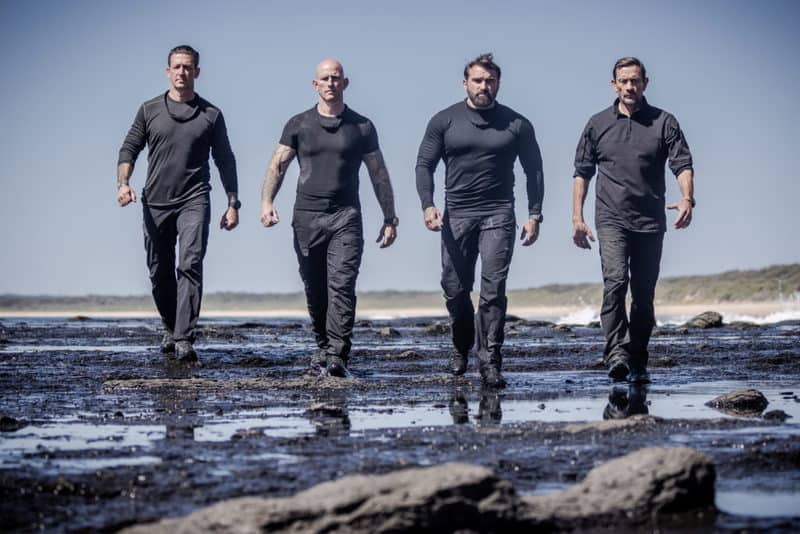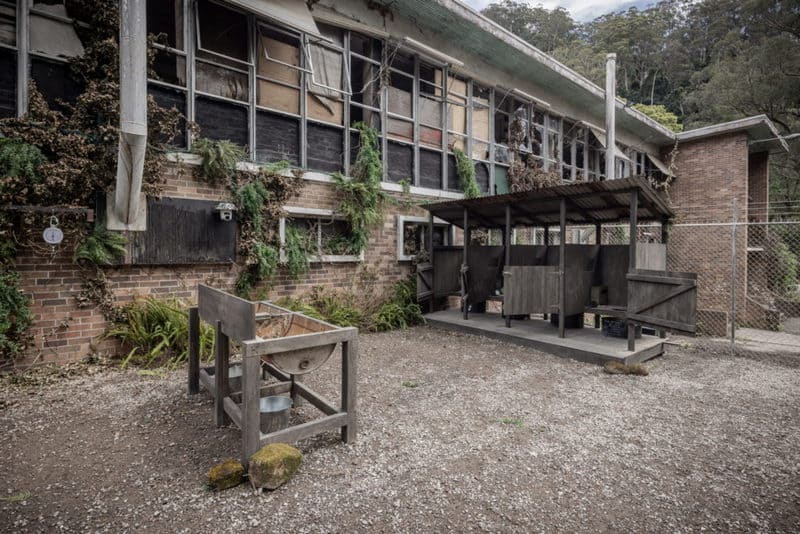TV’s toughest test, SAS Australia, is back for a third season starting 7.30pm next Monday, 21 February on Channel 7 and 7plus and here’s everything you need to know.
The new recruits will be guided by Chief Instructor Ant Middleton, returning DS (Directing Staff) Olli Ollerton and two new DS, retired US Navy SEAL Clint Emerson and former British Special Forces soldier Dean Stott.
Across 14 episodes, the Directing Staff will push the seventeen Aussie celebrities beyond their limits, in a series of physical and psychological tests from the real SAS Australia selection process.
Recruits will be subjected to extreme physical endurance, sleep deprivation, interrogation and psychological testing, with no allowances or exceptions made for their celebrity status or gender.

The Recruits
Anna Heinrich, 34 – TV Personality
Barry Hall, 44 – AFL Great
Darius Boyd, 34 – Retired NRL Star
Ebanie Bridges, 35 – Professional Boxer
Ellia Green, 28 – Rugby 7s Olympian
Geoff Huegill, 42 – Olympic Swimming Legend
Locky Gilbert, 32 – Reality TV Star
Melissa Tkautz, 47 – Singer / Actor
Melissa Wu, 29 – Olympic Diver
Michael Zerafa, 29 – Professional Boxer
Millie Boyle, 23 – NRLW Player
Orpheus Pledger, 28 – Actor
Pauly Fenech, 51 – Comedian
Riana Crehan, 34 – Motorsports Presenter
Richard Buttrose, 49 – Convicted Drug Dealer
Simone Holtznagel, 28 – Model
Wayne Carey, 50 – AFL Commentator

Course Facts
This year’s SAS Australia, the star recruits will be cut off from the outside world at a brand-new base in unforgiving jungle terrain, bordered by wild seas, dramatic cliff faces and rugged rocky outcrops.
Once they arrive:
• Temperatures range between 5-22°C during filming.
• The DS run the entire course without producer direction. No one enters the base apart from the recruits, the DS and the doctor.
• Recruits are not referred to by name – only the number on their armband.
•Each recruit is issued with a 20kg Bergen which contains items they need for survival including two sets of kit,a helmet, chest harness, sleeping mat, tarp, towel, water bottle, knife, mess kit, mug, toilet roll, sanitising wipes, sunglasses, head torch, notebook, pencil, toothpaste, toothbrush, belt, armband, whistle, watch, sleeping bag and compass.
•Recruits sleep on camp cots, with one sleeping bag and an army blanket. They average five hours rest per night.
•Recruits do not have access to hot water. They must fill a bucket with cold water from a tap and carry it to the sink area – with one sink allocated to dishwashing, and another to wash themselves in.
•There are no flushing toilets. A ‘short drop’ toilet (drum and sawdust) must be cleaned out and maintained by the recruits themselves, along with all other aspects of base maintenance.
•Recruits must chop their own wood and light the fires that are the only sources of heat – two pot belly stoves in the recruit dorm. Fire is also the only means of drying their clothing, a critical nightly ritual after days spent in water, mud and ice.
• Recruits are served three basic meals per day, consisting of oatmeal and a boiled egg for breakfast, a sandwich for lunch and a protein with salad or vegetables for dinner, equating to less than 1,400 calories per person on some days.
•Only the duty recruit can serve meals and all recruits must dine at the same time. This season the hungry recruits devour 145 cups of runny oatmeal, 85 potatoes and 65 servings of boiled chicken in 14 days.
• Recruits are only allowed to see the doctor when the DS approve a visitation.
• Recruits travel in the back of cramped wagons for up to six hours a day. There are no toilets on the road to each task – recruits must “go bush”.
• In the first 48 hours, recruits are set alight, almost drowned and must conquer a fear of heights.
• Recruit injuries include torn ligaments, cracked rib cartilage, bruises and cuts. The doctor uses more than 290 Band-Aids, 72 metres of strapping tape and 1,000 alcohol swabs in two weeks.
• 22 leeches are extracted from cast and crew.
• More than 200 crew work on the series. Recruits are not allowed to communicate with crew members – they can only speak to the DS.
• 57 cameras and six drones are used to film the series.

SAS Australia Terminology To Know
Base
The recruit and DS living quarters, which include the Recruit Dorm, DS Dorm, Mirror Room, Prayers Room, Mess and Parade Square.
Detail
When the DS brief the recruits on their task or what they’re about to do, this is known as detail.
Mirror Room
This is where the DS interrogate the recruits with tactical questioning (sometimes referred to as TQs or Interrogations).
Prayers Room
The room where the DS discuss and assess the recruits and the day’s events.
VW
Recruits can voluntarily withdraw (VW) from the course at any time by handing their numbered armband over to one of the DS.
Beastings
The imposition of arduous physical exercises for training or punishment, aimed at breaking or making the recruits.
Oppo
A military term for buddy or mate.
Psychometric testing
Used to assess an individual’s performance potential for the Special Forces.
Bergen
A type of rucksack supported by a frame, used by the military (known as the “house on your back”).
Duty Recruit
The DS nominate a new Duty Recruit every few days who is responsible for being the spokesperson for all recruits to the DS.
Parade Square
The outdoor area on base where the DS brief and exercise the recruits.
Tasks
The off-base challenges such as Aeroplane Down, Escape the Trunk, The Beehive, Tunnel Rat, King of the Ring, Waterfall Climb, Surf Immersion and Mangrove Team Pull.
